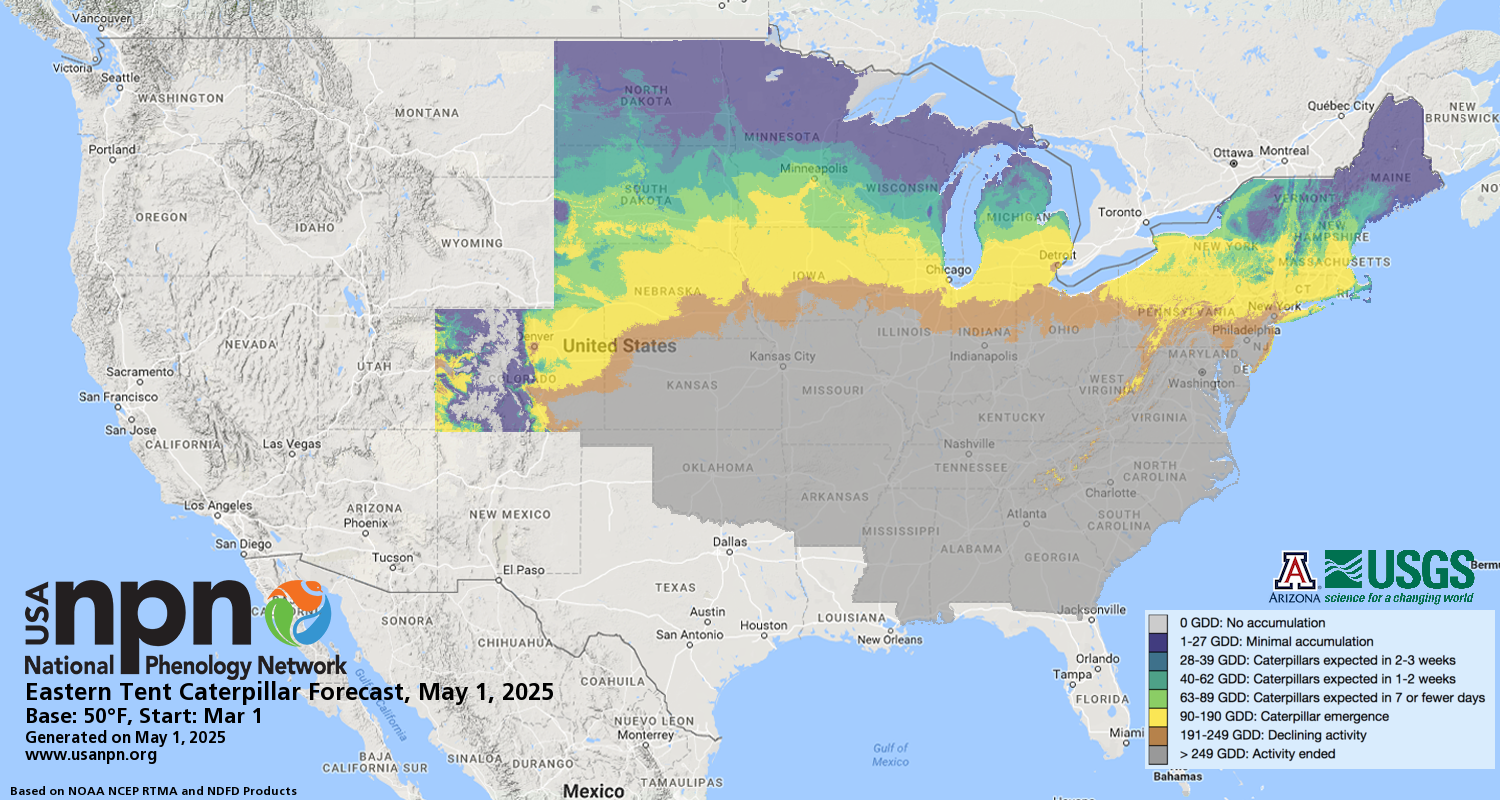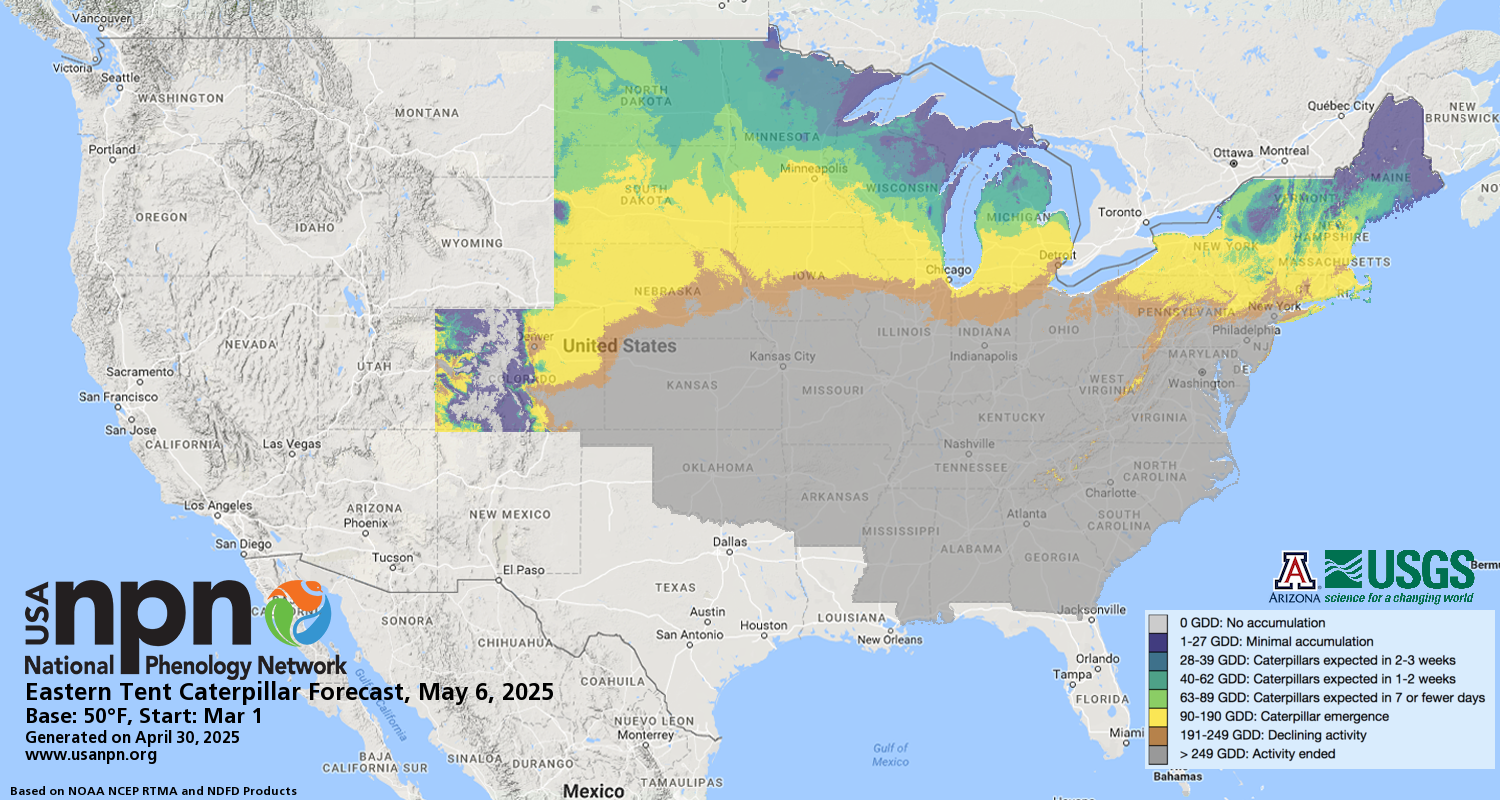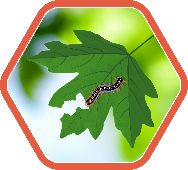Due to technical difficulties, this Pheno Forecast is not currently being updated for 2025. Please check back next year for updated map status.
Eastern Tent Caterpillars are a native moth and while they can defoliate trees, the trees rarely die as a consequence.
WHAT ARE PHENO FORECASTS?
Pheno Forecast maps predict key life cycle stages in invasive and pest species, to improve management efficacy. For insect pest species, Pheno Forecasts are based on published growing degree day (GDD) thresholds for key points in species life cycles. These key points typically represent life cycle stages when management actions are most effective. These maps are updated daily and available 6 days in the future.
Help us improve these maps! Our Pheno Forecast map products are still in development, and we seek input on their performance in your area. Give your feedback at the bottom of the page.
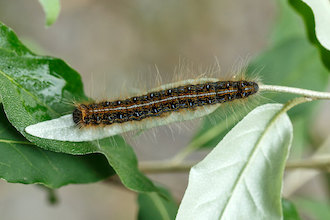
SPECIES BACKGROUND
Eastern tent caterpillars (Malacosoma americanum) overwinter as an egg mass. After hatching, the caterpillars work together to build their silken tent, which they use for shelter during hot or rainy weather. After four to six weeks of feeding on leaves they pupate and the adult moths emerge three weeks later. Eastern tent caterpillar population size varies year to year, with large outbreaks every few years. This species is native to North America.
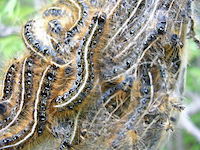
CATERPILLAR FORECAST
Knowing the timing of caterpillar emergence can shed light on food availability for birds as well as guide control measures. For specific information on preferred treatment options in your region, we recommend contacting your local extension agent. Additional resources are available through UMass Extension.
EXPLORE THIS FORECAST
Learn more about this forecast using our visualization tool!
|
Phenophase |
GDD threshold |
Base temp |
Start date |
GDD method |
Model origin |
Source |
|---|---|---|---|---|---|---|
|
Caterpillar emergence |
90-190oF |
50oF |
Jan 1 |
Simple average |
NY |
More information on map development and re-use policy.
